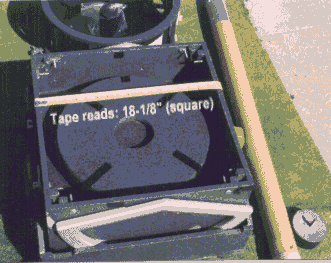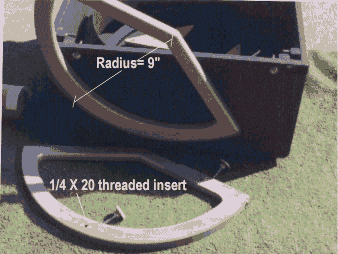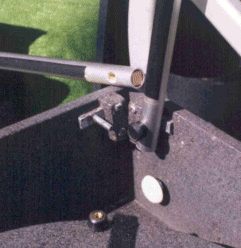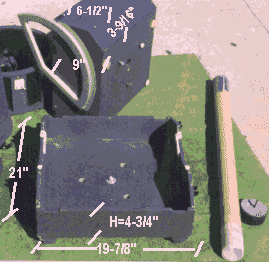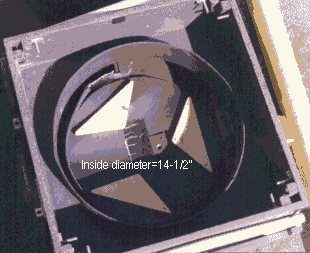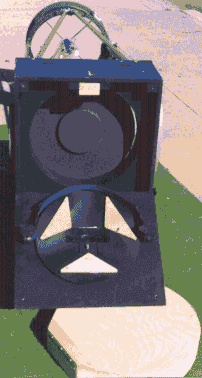| |
A couple more views of the Mirror Box. At left, with mirror cover removed, you can see
the nine-point mirror supports and sling. For the correct placement of these points, I
used David Chandler's freeware program "Cell."
For details on how to make a simple sling, mirror clips, and cell, I recommend The
Dobsonian Telescope by David Kriege and Richard Berry; this book will answer any
questions you have about making a truss-Dob, and much more.
Note that I have a light baffle (made of 1/8" Italian Poplar plywood) elevated
2-1/2" off an "intermediate deck" which is 5-1/4" below the top edge
of the Mirror Box.
At right you see the "tailgate" open. When closed two "floor
levelers" keep it shut (the floor levelers screw into 1/4 X 20 threaded inserts).
That unpainted block at the top inside of the Mirror Box is a captured spring-loaded
block, faced on one edge with cork: When traveling short distances (not flying, in other
words) I leave the mirror inside the Mirror Box and unscrew this block from the outside;
this allows the block to put a little pressure on the mirror and helps prevent it from
flopping around. At the observing site, I screw this spring-loaded block in so the mirror
is free to move.
|
|
